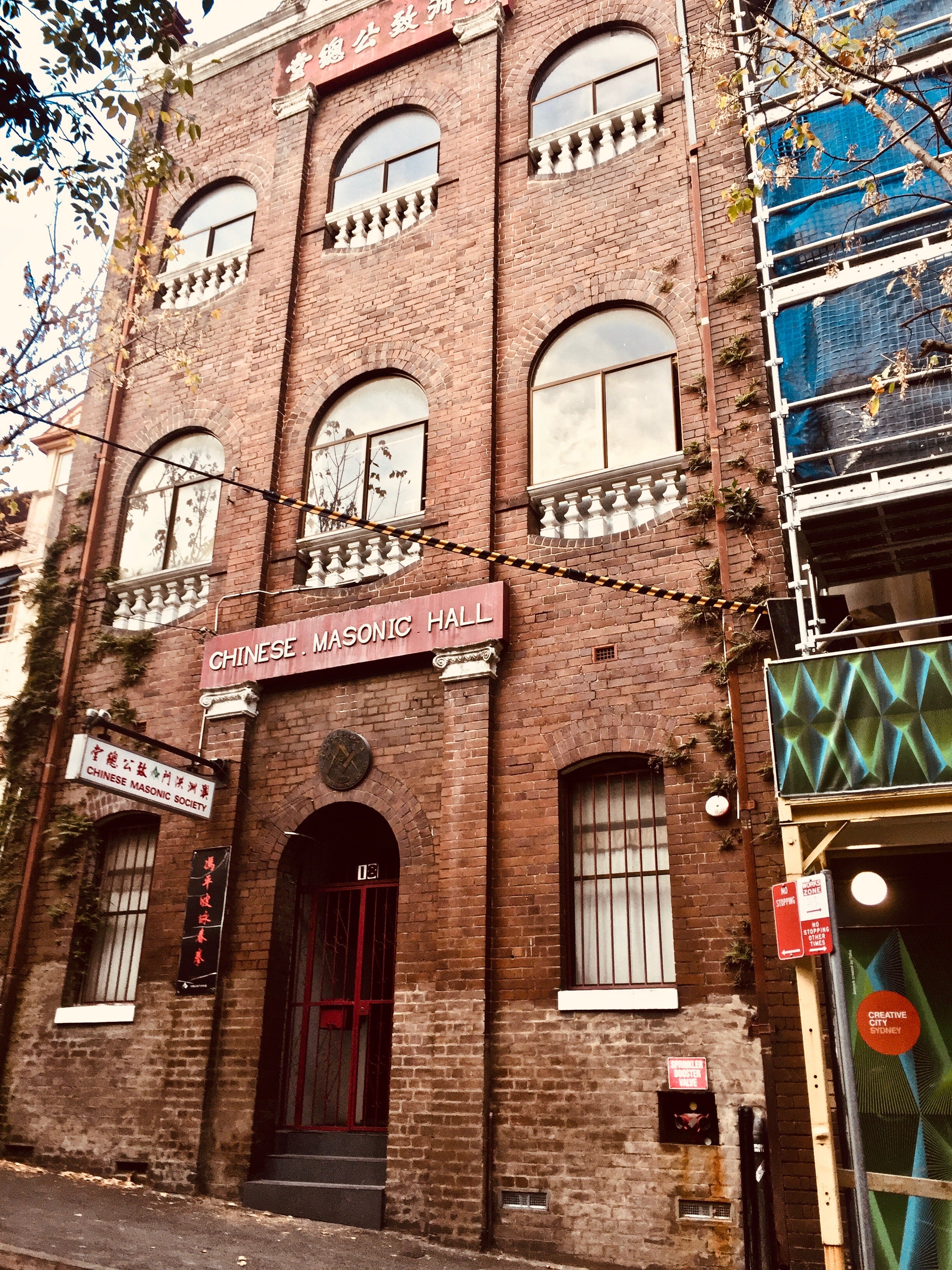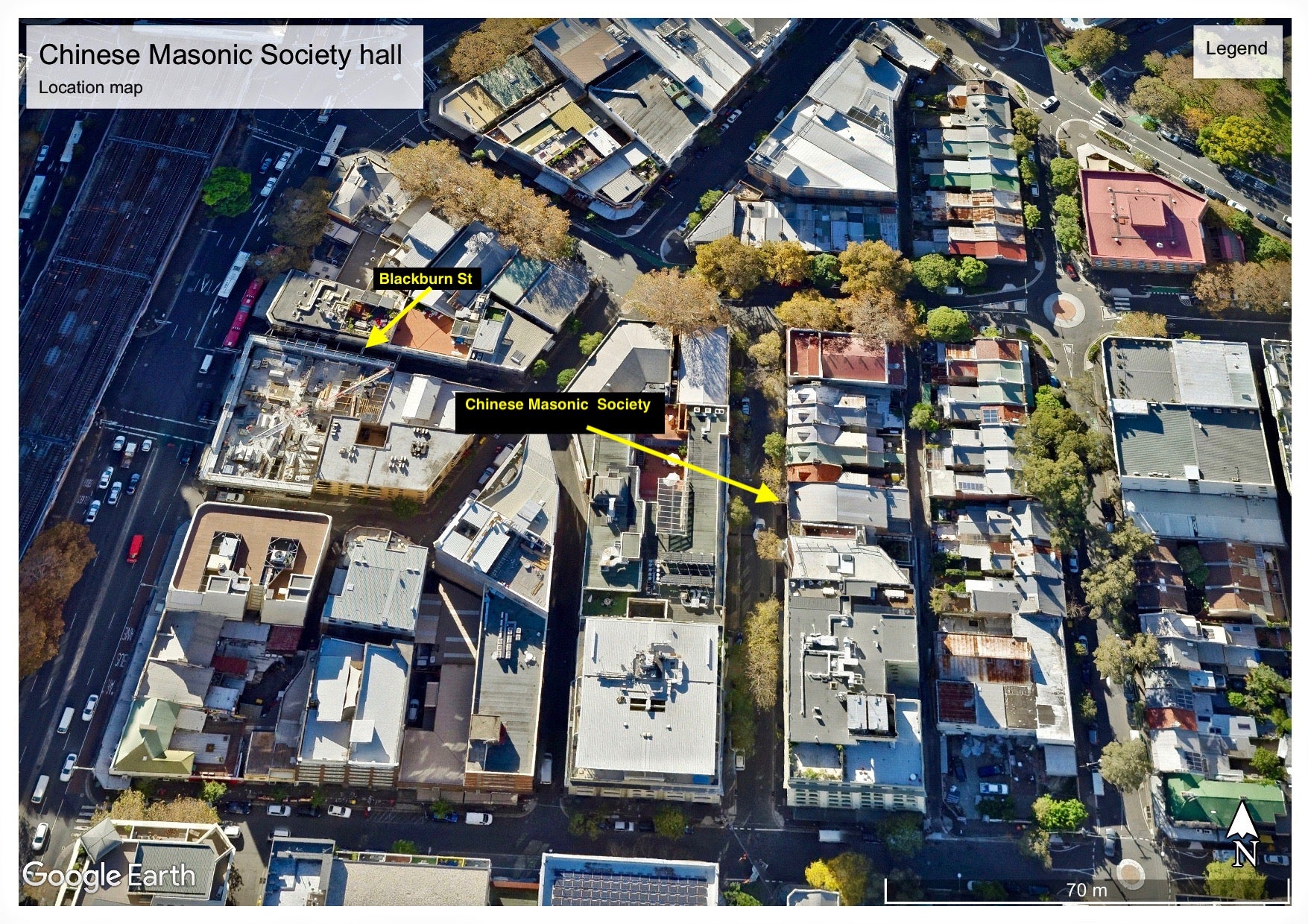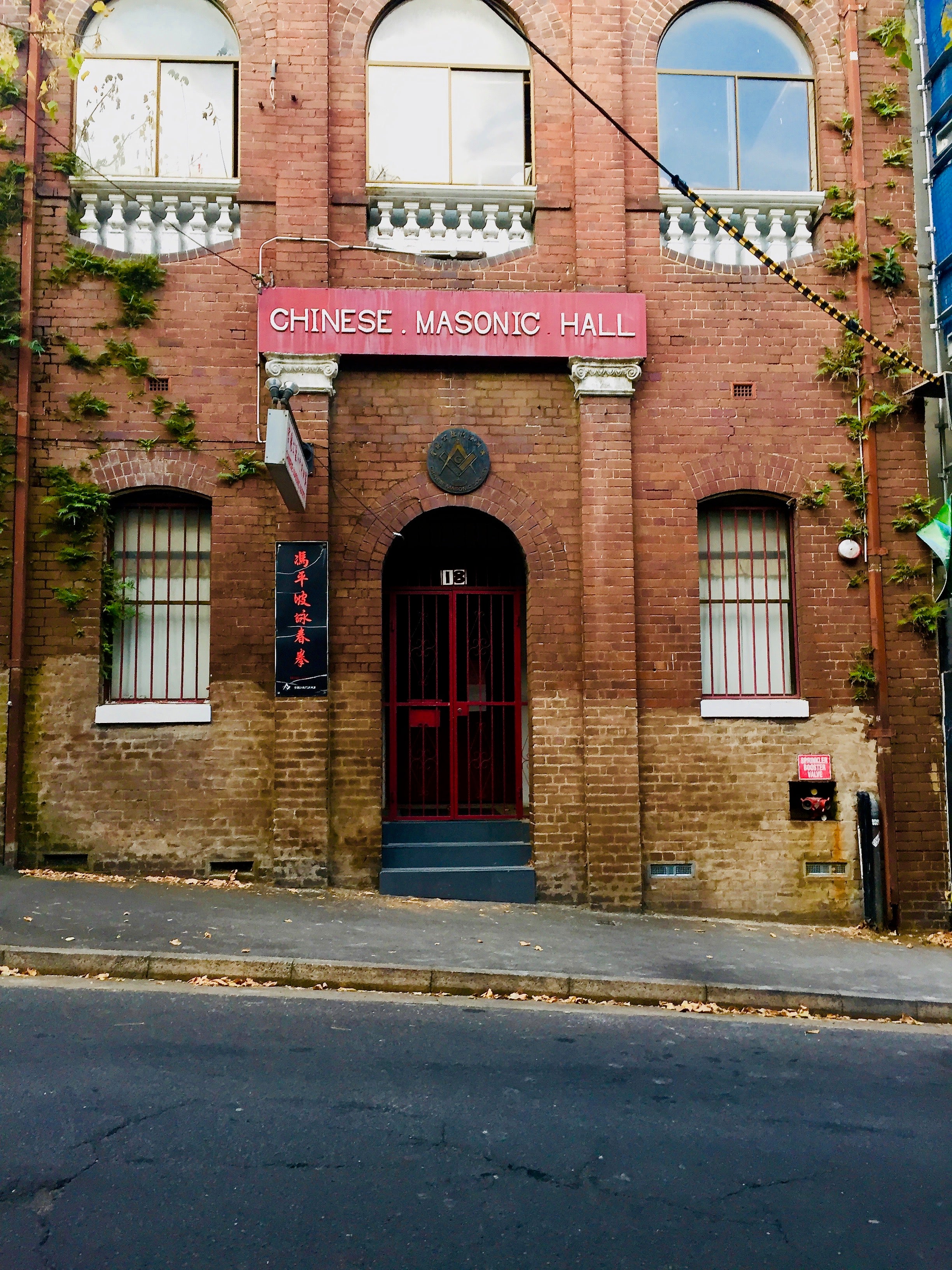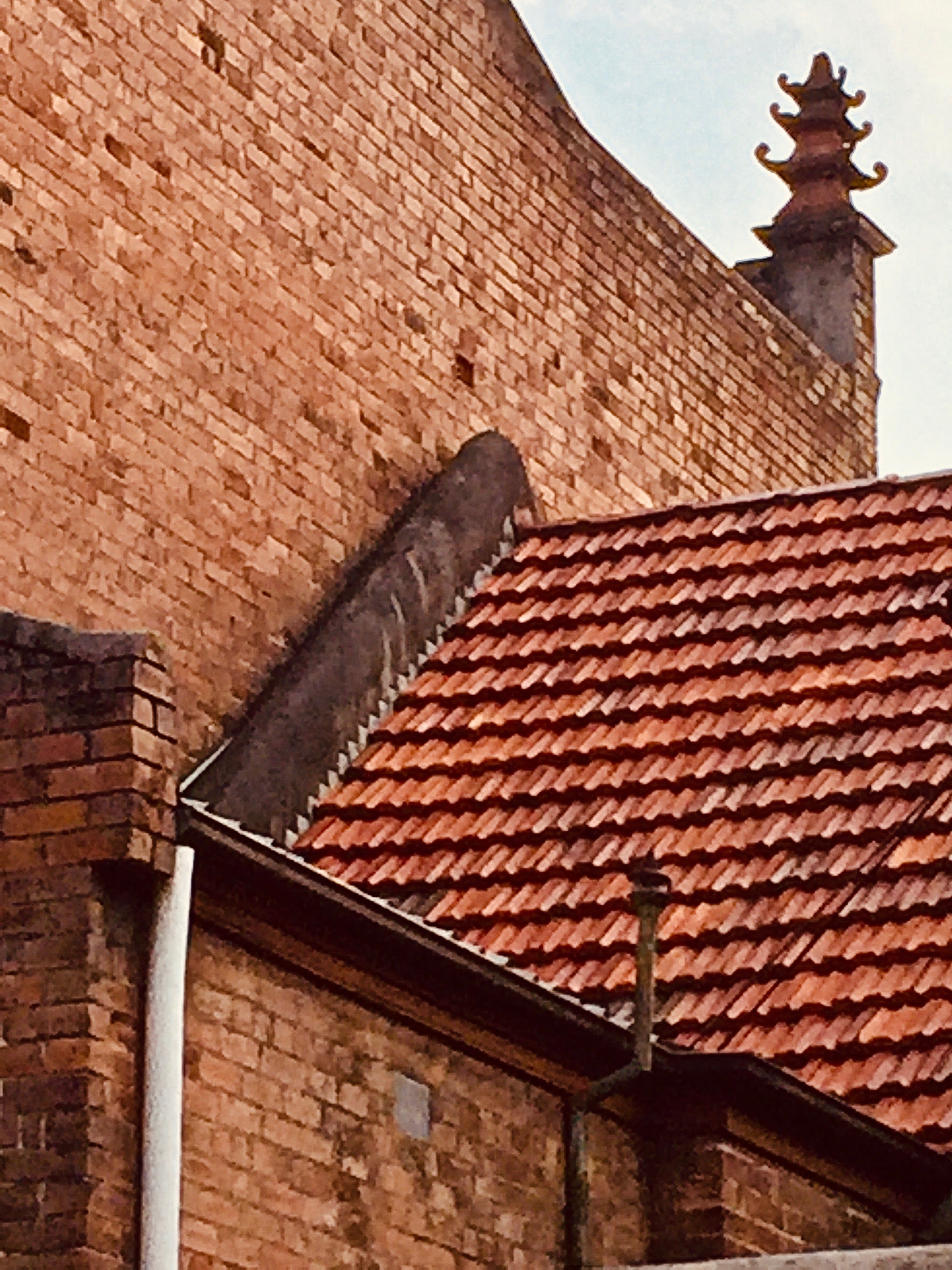
Chinese Masonic hall, Sydney
The Chinese Masonic Society building at 18 Mary Street in Surry Hills, Sydney, was constructed in 1911, the same year that the Qing Dynasty came to an end in China, replaced the following year by the Republic of China. The Chinese Masonic Society grew out of the Yee Hing Company (also known as the Hung League), an anti-Manchu underground network in China with chapters in North America and other key destinations of Chinese migrants. Many Chinese who originated from Zhongshan belonged to the Yee Hing and subsequently to the Chinese Masonic Society. The building is a significant site in the China-Australia heritage corridor.

Map showing the location of the Chinese Masonic Society
The Yee Hing Company had been based in Blackburn Street, Surry Hills, from 1908 but moved to the purpose-built Mary Street buildings in 1912. The Yee Hing Company translated its name to the Chinese Masonic Society in 1912 on the grounds that there were similarities between the Company’s underground nature and the Freemasons’ history of being a secret society. Like the Freemasons, the Yee Hing wished to gain recognition as a respectable community organisation. As Shirley Fitzgerald (2007, 144) observes, 'Yee Hing was no more secret and mystical' than freemasonry. While the Chinese Masonic Society did not have formal links with freemasonry as such, as John Fitzgerald (2007, 94) notes, there were real links between Chinese Masons 'and white Freemasons through a variety of personal and business networks'.

Location map showing the previous (Blackburn Street) and present (Mary Street) locations of the Chinese Masonic Society
The Yee Hing Company and the Chinese Masonic Society were strong supporters of the republican cause in China and the hall in Mary Street served as a centre for many pro-Republic activities.
'The Chinese Masonic Society greatly expanded in 1916 and ran its own newspaper for many years. It was also prominent in many of the legal cases taken up to improve the rights of Chinese, including the High Court challenge to the attempted expulsion of many wartime refugees in 1949' (Williams, 1999, 18)
The Society’s building in Mary Street is a three storey brick structure with balconies on the upper floors which in recent years have been infilled with aluminium-framed glass windows. The only elements of the building which explicitly reference Chinese traditional design are the stucco filials on each corner of the top of the façade, which are in the shape of a miniature pagoda.

The front of the building, on Mary Street, Surry Hills.

One of the pagoda-shaped filials
The Chinese Masonic Society remains active today and still occupies the same buildings
https://www.chinesemasonicsociety.org.au
References
Fitzgerald, J. (2007) Big White Lie: Chinese Australians in White Australia. Sydney: University of NSW Press.
Fitzgerald, S. (2007) Red Tape and Gold Scissors: The Story of Sydney’s Chinese. Sydney: Halstead Press.
Williams, M. (1999) Chinese settlement in New South Wales: a thematic history: A report to the Heritage Office of NSW, https://www.environment.nsw.gov.au/resources/heritagebranch/heritage/chinesehistory.pdf
